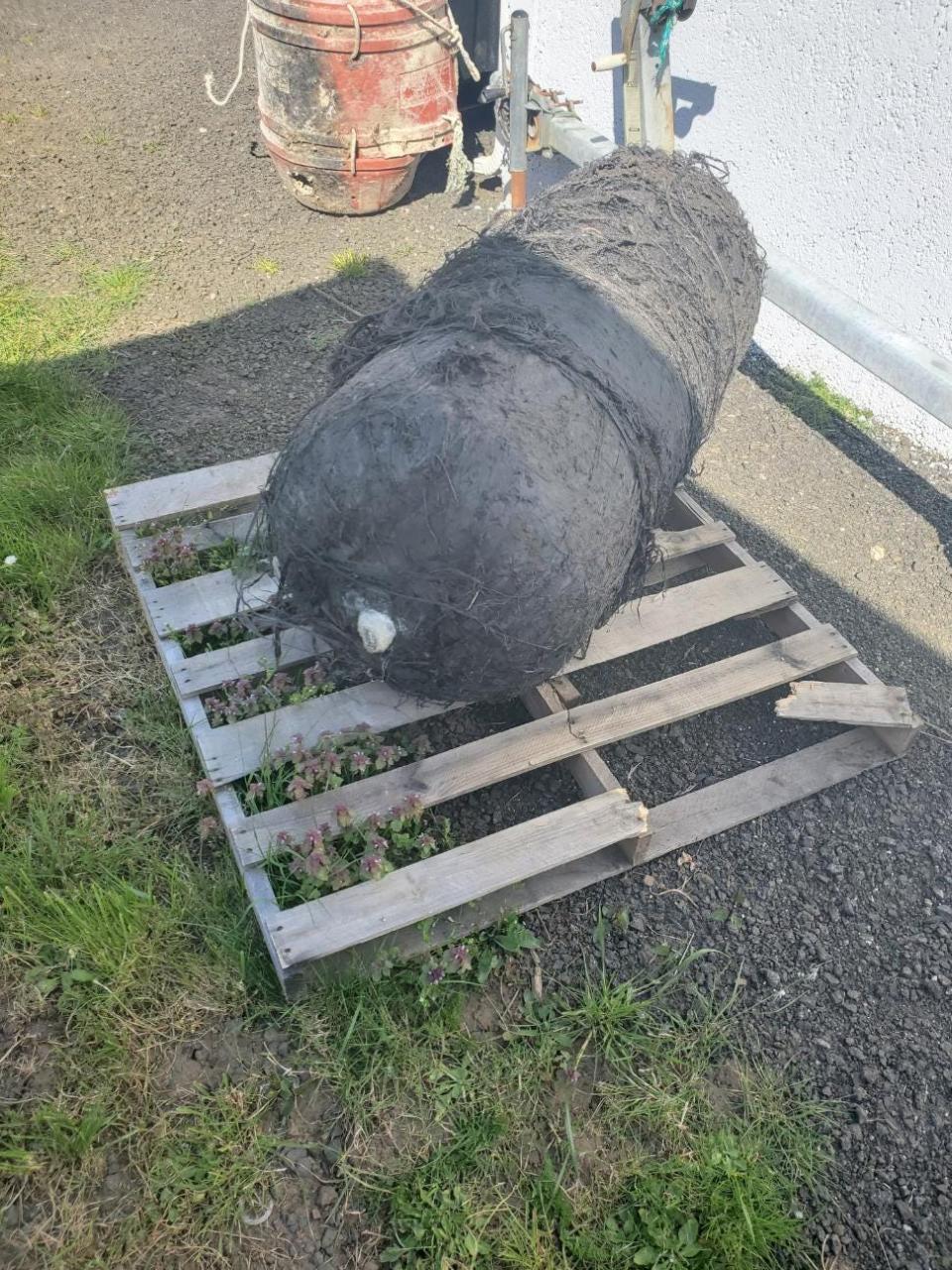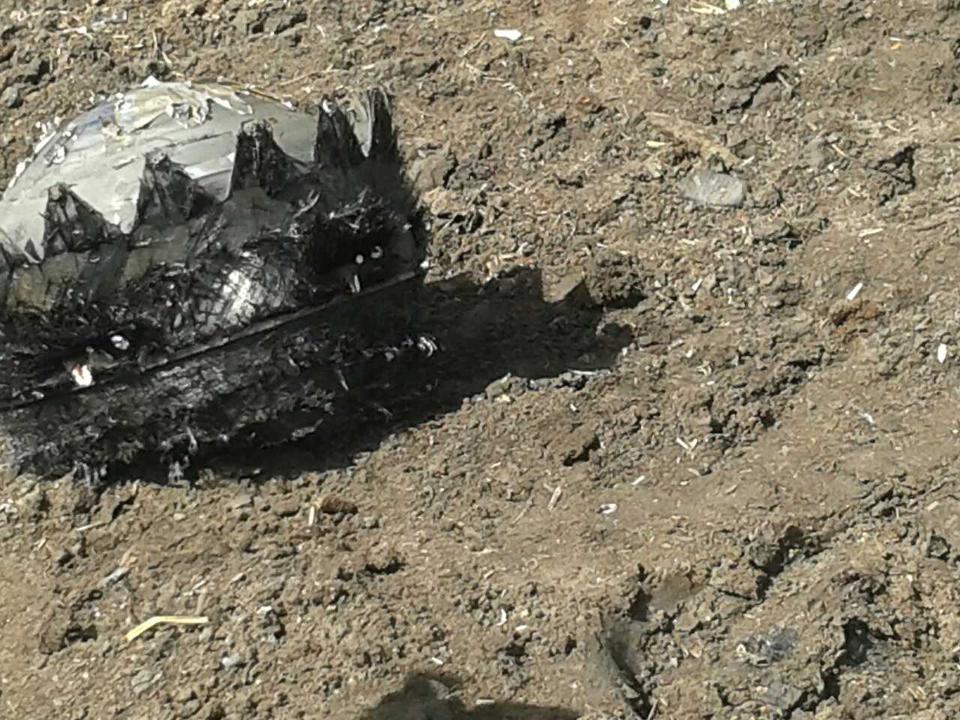A decommissioned Russian satellite broke apart in low Earth orbit Wednesday, creating more than 100 pieces of debris and adding to the space junk already in orbit.
RESURS-P1, which NASA said was a Russian observation satellite, broke up around 10 a.m. Mountain Time, according to a release from the U.S Space Command.
“USSPACECOM has observed no immediate threats and is continuing to conduct routine conjunction assessments to support the safety and sustainability of the space domain,” the release said.
The event adds that much more space junk to a sky already rapidly filling up with flying chunks of machinery, frozen coolant, and other fragments. And some of it comes down.
A family in Naples, Florida, is filing a claim against NASA for more than $80,000 in damages to their home after a chunk of space debris from the International Space Station tore through their roof earlier this year.
NASA confirmed last week that a large chunk of debris found along a North Carolina trail last May came from a SpaceX Dragon rocket, according to the Charlotte Observer, and an NC resident in the next county heard a piece bouncing off his house. Large fiery streaks of light appeared over Los Angeles in April which turned out to be space debris from a Chinese spacecraft, according to U.S. Space Command, and a massive chunk of an Indian rocket washed ashore in Australia last year.
Waste in space: Why junk in Earth orbit is becoming a huge problem
What is space debris?

As we send more and more items into low Earth orbit, there are more chances for chunks to come back down to us. Space debris, also known as orbital debris or just space junk, is any human-made object in orbit around the Earth that has no use. It falls into the Earth’s atmosphere every day, but a vast majority burn up on the way down.
“LEO is an orbital space junkyard,” NASA said. “There are millions of pieces of space junk flying in LEO. Most orbital debris comprises human-generated objects, such as pieces of space craft, tiny flecks of paint from a spacecraft, parts of rockets, satellites that are no longer working, or explosions of objects in orbit flying around in space at high speeds.”
Space debris is caused by malfunctioning satellites, meteorite impacts, even just tools dropped by astronauts on space walks. Objects rarely cause damage or minor injury, but more junk in space creates a higher probability of that happening, experts say.


What can be in space junk?
According to NASA, space junk can include:
-
Derelict spacecraft and upper stages of launch vehicles
-
Carriers for multiple payloads
-
Debris intentionally released during spacecraft separation from its launch vehicle or during mission operations
-
Debris created as a result of spacecraft or upper stage explosions or collisions
-
Solid rocket motor effluents
-
Tiny flecks of paint released by thermal stress or small particle impacts
Most of it came from satellite explosions and collisions, NASA said. This one is just the latest.
In 2007, China deliberately destroyed its Fengyun-1C weather satellite leaving a cloud of shrapnel and debris in LEO. An American communications satellite (Iridium 33) and a derelict Russian military satellite (Kosmos 2251) accidentally collided in 2007, spewing more debris into orbit, some of which is expected to remain until the end of the century. These two incidents resulted in a 70% increase in space junk in LEO.
There is also space debris that never made it to space. In 2015 a SpaceX Falcon 9 rocket exploded shortly after liftoff, raining pieces into the Atlantic off the Florida-Georgia coast with some chunks turning up months later in the Isles of Scilly off the southwestern tip of Cornwall, England.
SpaceX’s Starship rocket exploded just after takeoff on its first test flight in April last year, casting chunks of metal and concrete into a national wildlife refuge and sending particulate matter miles from the launch pad in Boca Chica, Texas. Environmental groups sued the Federal Aviation Administration, saying that Elon Musk’s company was allowed to bypass environmental reviews,
How much space debris is in the sky?
NASA estimated about 17.6 million pounds of junk is in Earth’s orbit.
The European Space Agency said the debris is about a quarter inch to 4 inches in size, traveling at high speeds. Small debris burns up as it reaches Earth, but bigger chunks can make an impact.
“There are no international space laws to clean up debris in our LEO,” NASA said.
Space agencies around the world are working on space debris mitigation methods, but removing tiny bits zipping around the Earth is an extremely tricky problem.
But, there is an international treaty stating that if space junks falls to Earth and causes damage or injury, the country that launched the object is responsible without anyone proving negligence caused the junk, Michelle L.D. Hanlon, director of the Center for Air and Space Law at the University of Mississippi School of Law, told USA TODAY.
The treaty is ineffective if a country’s own object causes harm within its borders.
Last year the Federal Communications Commission fined the Dish Network $150,000 for failing to bring an old satellite to a safe orbit where they said they would, as part of a crackdown on space debris.
What are the odds of being hit by space debris?
Your risk of being injured by falling space debris is less than 1 in 100 billion, according to the European Space Agency. But the chances are (slightly) increasing.
“During the past 50 years an average of one cataloged piece of debris fell back to Earth each day,” NASA said. Most pieces burn up on entry and the bits that make it down to Earth are more likely to hit an ocean or on sparsely populated areas such as the Canadian Tundra, the Australian Outback or Siberia.
However, space exploration and satellite launches have increased exponentially in the last few years. According to ESA data, almost 2,500 pieces of space debris fell to Earth in 2022, although that number was back down to about 1,500 last year.
Watch the skies: A huge satellite hurtled to Earth and no one knew where it would land. How is that possible?
What do I do if I find space debris?
NASA has a space debris hotline to call: 866-623-0234. The agency says if people find or spot a piece of space debris to contact authorities and avoid touching it.
After the 2015 explosion, SpaceX established a recovery hotline and email address for anyone who found debris and that’s still available. You can call the Debris Recovery Hotline at 866-392-0035 or email [email protected].
Contributing: Jeanine Santucci, USA TODAY.
This article originally appeared on The Daytona Beach News-Journal: Russian satellite breaks up, adds more debris to Earth orbit
Source Agencies

